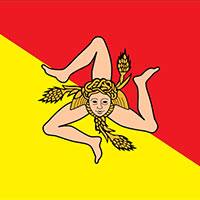Orto botanico, Palermo Botanical Garden
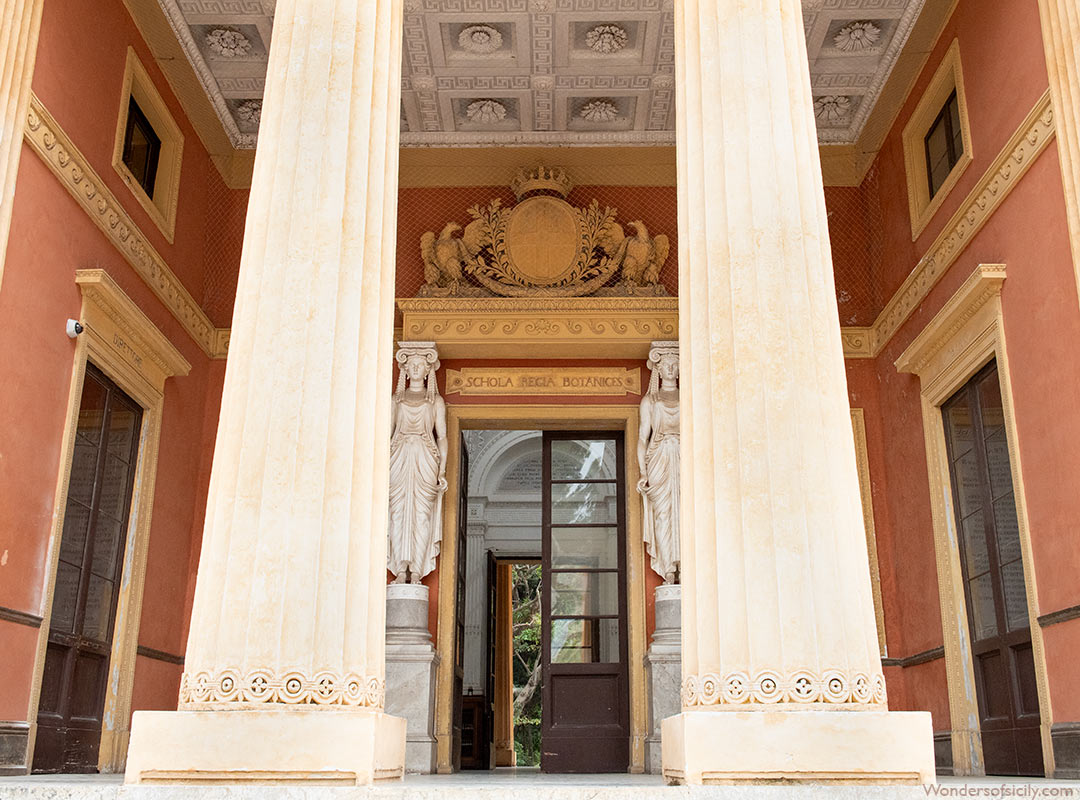
Palermo’s Orto botanico is a botanical garden as well as a research and educational institution. The park has many rare and beautiful plants and trees. It opened to the public in 1795.
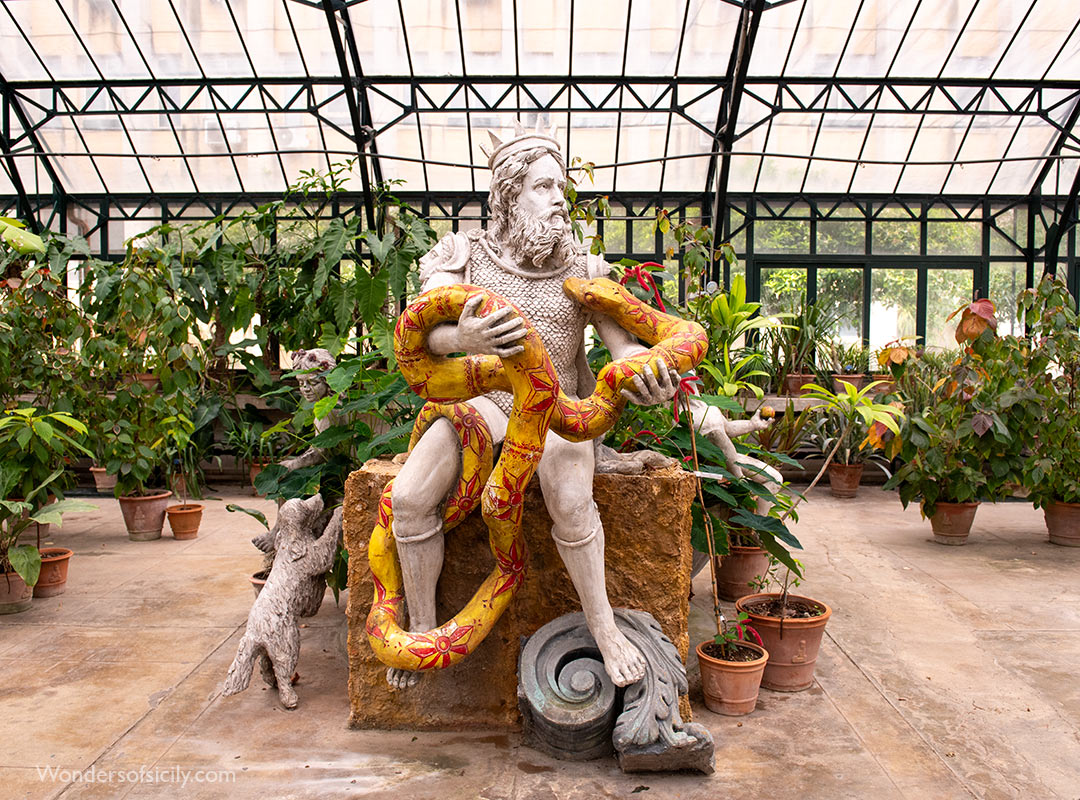
The statue in the greenhouse of Palermo's Orto Botanico depicts the Genius of Palermo (Genio di Palermo), an ancient protector of the city. This figure is traditionally portrayed as a bearded man wearing a crown, often accompanied by a serpent feeding from his chest—a representation rich in symbolism.
The serpent is emblematic of Scipio Africanus, who received assistance from the city of Palermo during the campaign against Hannibal’s Carthaginian forces. According to tradition, in recognition of this support, Scipio bestowed upon the city a golden basin surmounted by a statue of a warrior, depicted with a serpent feeding from his chest. The serpent itself carries a rich and complex symbolism: it is linked to the elemental forces of land and water and is traditionally associated with fertility, rebirth, and renewal. Furthermore, the serpent represents prudence, acts as an adversary to the sun, and signifies knowledge related to physical strength. In addition to the serpent, the symbolic attributes of the Genius include a crown, a scepter, and a dog.
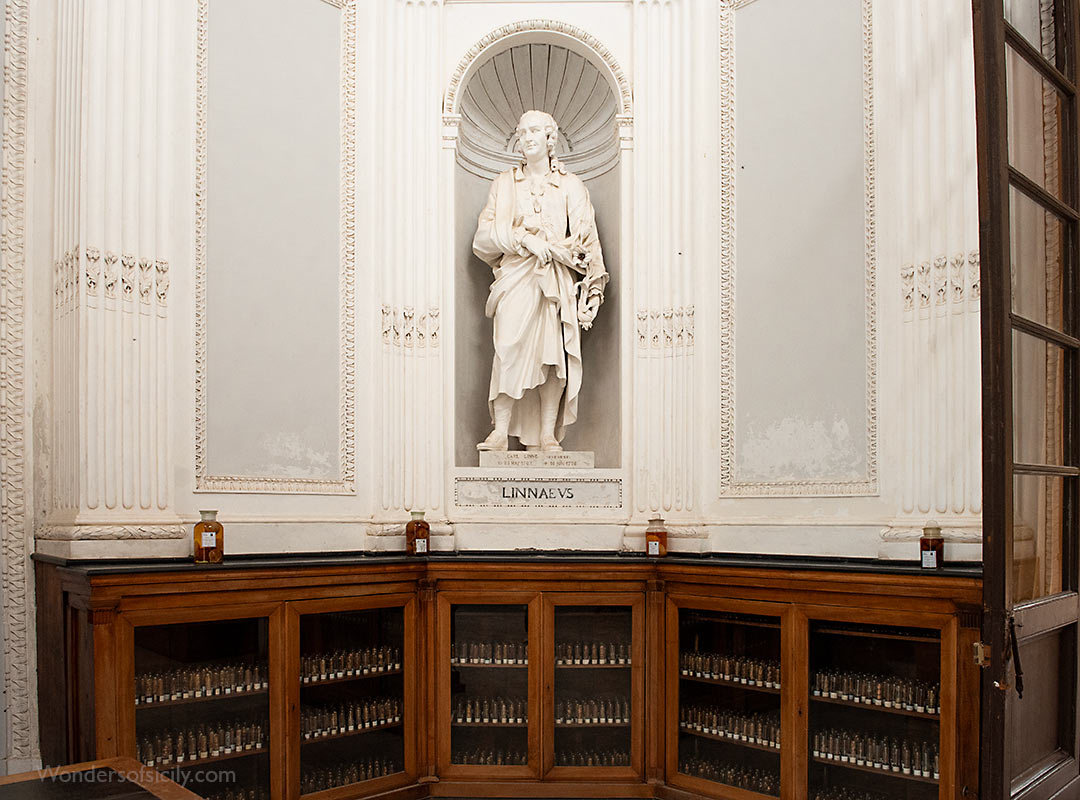
Carl Linnaeus (1707–1778), also known after ennoblement in 1761 as Carl von Linné, the Swedish biologist and physician who formalised the modern system of naming organisms. He is known as the “father of modern taxonomy”. The statue of him is in the building by the entrance of Orto botanico.
What looks like books inside the display cabinet are actually fragments of different tree species, cut like books and scientifically numbered.
The spectacular trees (Ficus microcarpa and Ficus magnolioides)
Ficus microcarpa and Ficus magnolioides are both species within the genus Ficus, which belongs to the family Moraceae. While they share common traits, such as the presence of aerial roots and a robust, tree-like growth habit, they differ in certain characteristics. Ficus microcarpa is often referred to as the "Chinese banyan" and is known for its ability to adapt to a variety of environments, particularly in urban areas. It typically features a more compact form with dense foliage and a broader canopy. On the other hand, Ficus magnolioides, sometimes called the "small-leaved fig," is distinguished by its more columnar growth habit and larger, leathery leaves resembling those of the magnolia tree. Though both species produce similar fruit types, Ficus magnolioides is often larger in size and has a more pronounced vertical growth pattern. Their ecological roles overlap, particularly in tropical and subtropical regions, but they are distinct in morphology and habitat preferences.

The imposing Ficus magnolioides is a tree of considerable size with a columnar habit. It is a majestic tree, with a fantastical, almost otherworldly form that leaves visitors gazing in awe and wonder.
Here children are playing inside one of the spectacular trees close to the beautiful pond. A few years after this photo was taken, access to the trees was no longer permitted.
Ficus magnolioides is characterized by a columnar growth habit, and exhibits a large crown with leathery, oval-elliptical leaves resembling those of the Magnolia. The upper surface of the leaves is dark green and glossy, while the lower surface is silvery. The fruit is an edible syconium (the type of fruit borne by figs, formed by an enlarged, fleshy, hollow receptacle with multiple ovaries on the inside surface).

Ficus magnolioides is a majestic tree of considerable development, characterized by a columnar growth habit, exhibits a large crown with leathery, oval-elliptical leaves resembling those of the Magnolia. The upper surface of the leaves is dark green and glossy, while the lower surface is silvery. The fruit is an edible syconium.
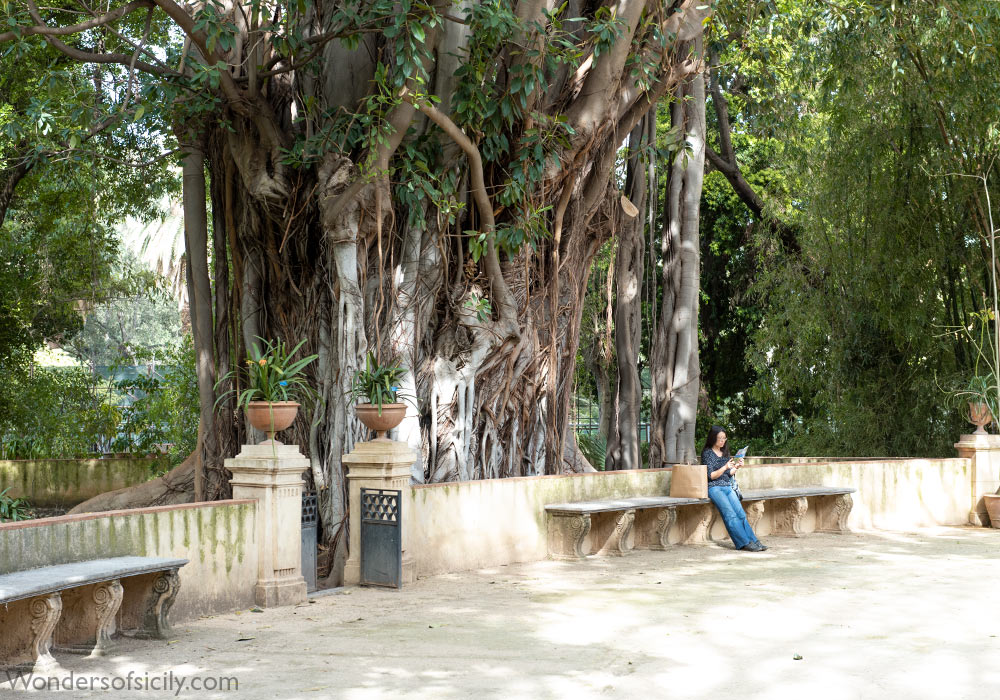
The aerial roots descend from the massive branches, like twisted remnants of a nightmare still lingering in the air, thickening over the years into towering columns that give the tree an almost cathedral-like majesty.
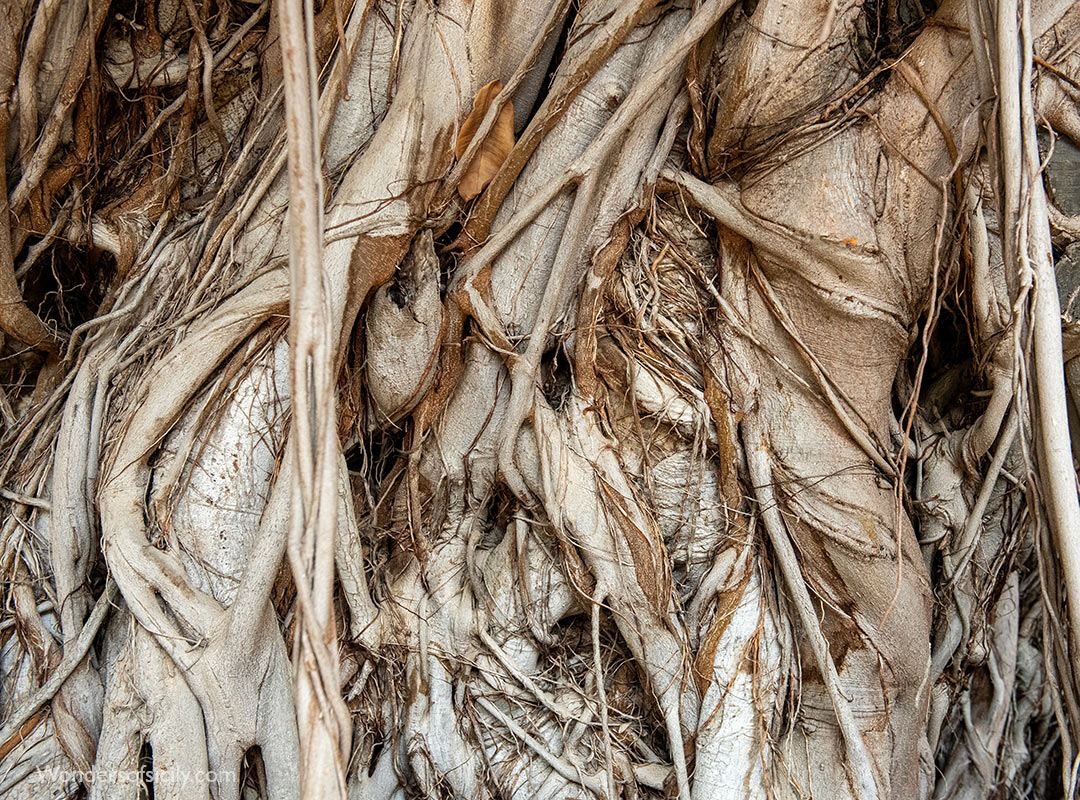
Magnificent details of the complex structure formed by aerial roots.
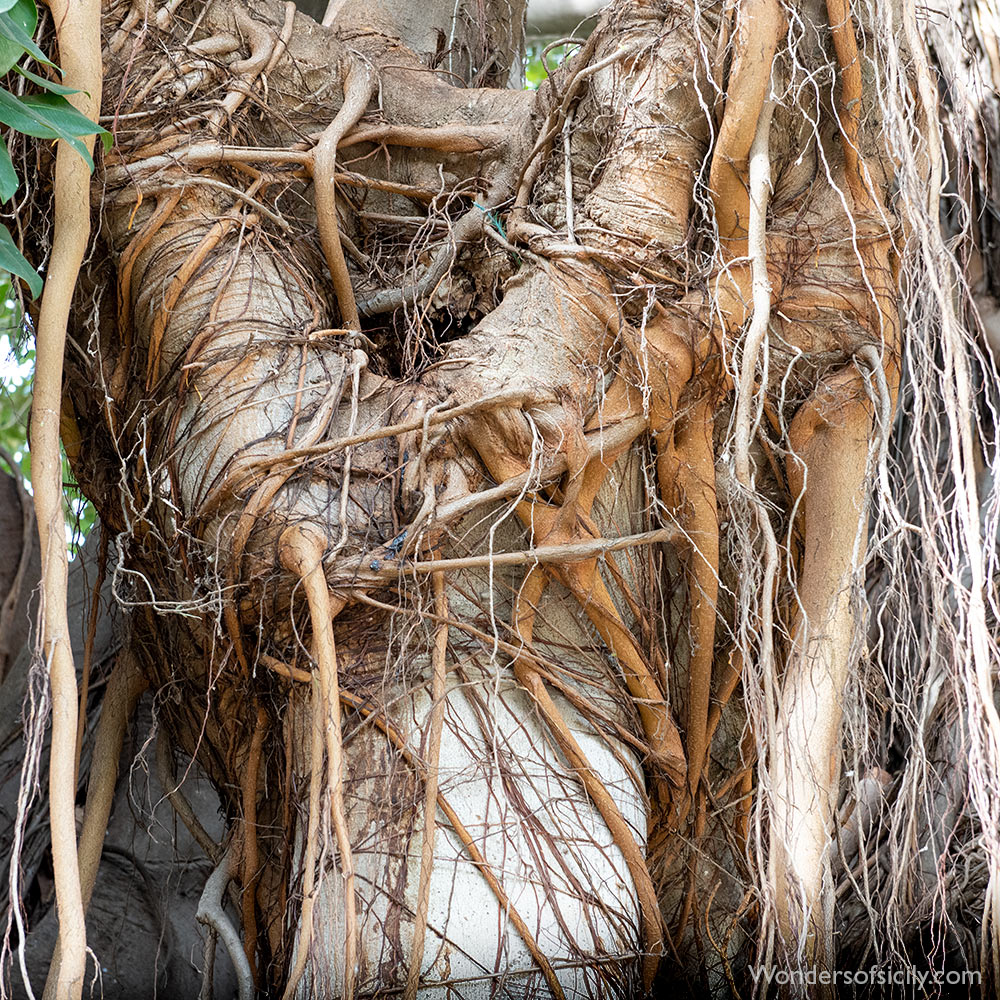
Ficus microcarpa (near the entrance), commonly referred to as the "Chinese banyan" or "ginseng ficus," naturally develops aerial roots as part of its growth process, particularly in warm and humid climates. These roots emerge from the branches or trunk and extend downward toward the soil in search of additional water and nutrients. Upon reaching the ground, the aerial roots may thicken, become woody, and serve as supplementary support structures for the tree.
In Ficus microcarpa specimens cultivated indoors or maintained as bonsai, the development of aerial roots is less frequent due to lower ambient humidity. However, if humidity levels are sufficiently high, the plant may still initiate the formation of aerial roots. Many bonsai enthusiasts actively encourage the growth of aerial roots by employing humidity tents or by regularly misting the plant.
Other trees
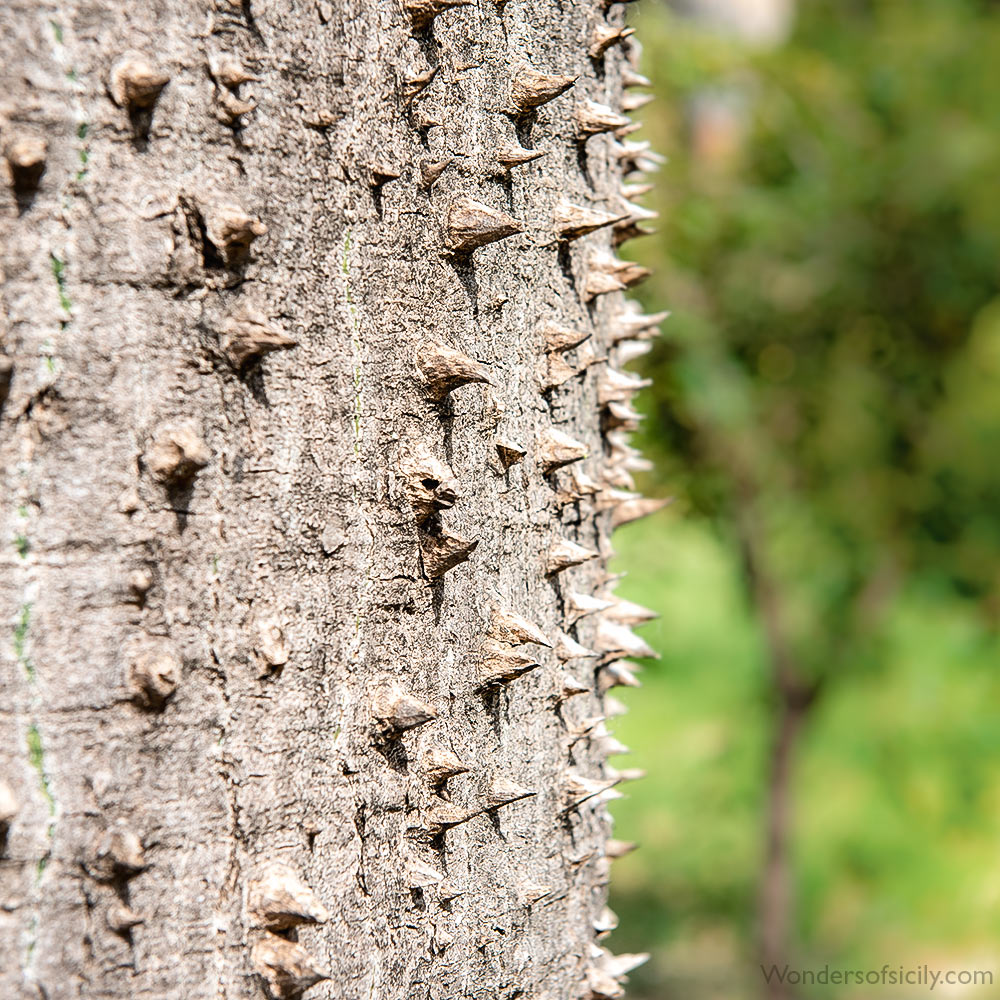
A tree with nasty spikes. Orto botanico, Palermo
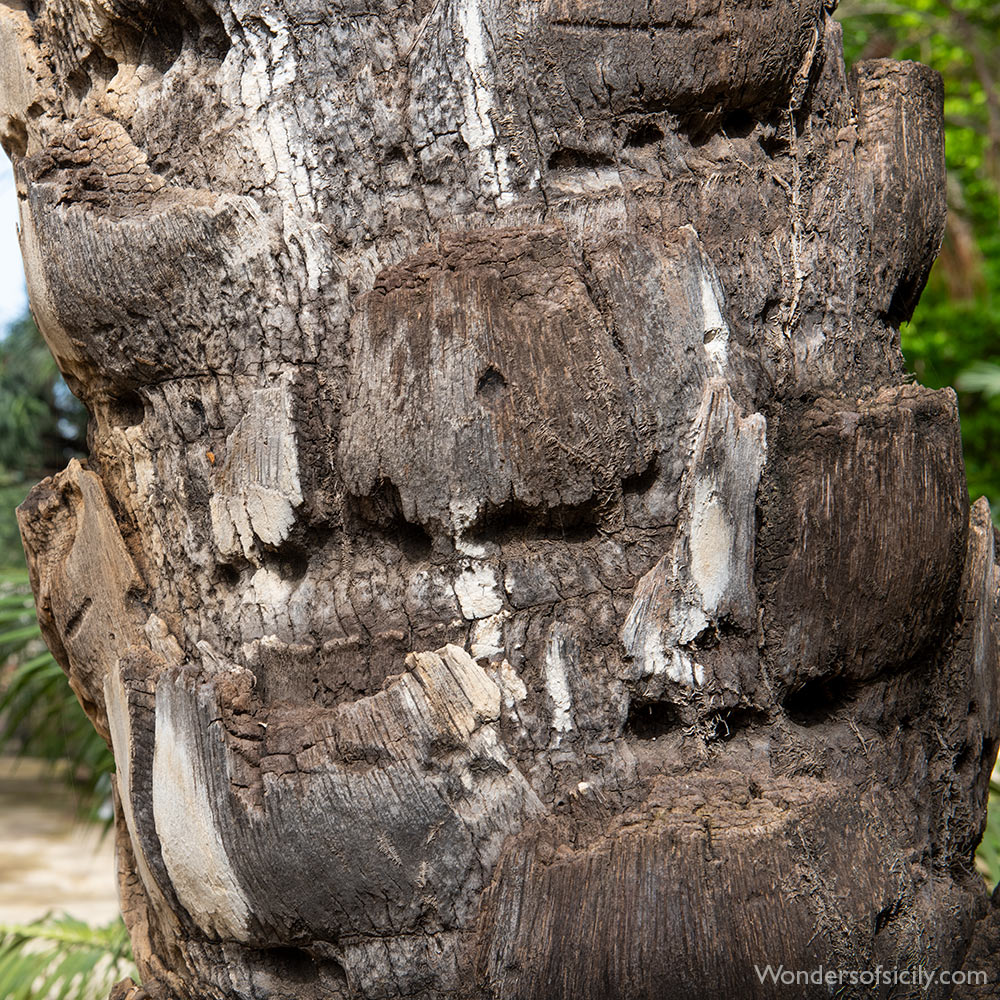
A tree with a history.
The pond and the turtles
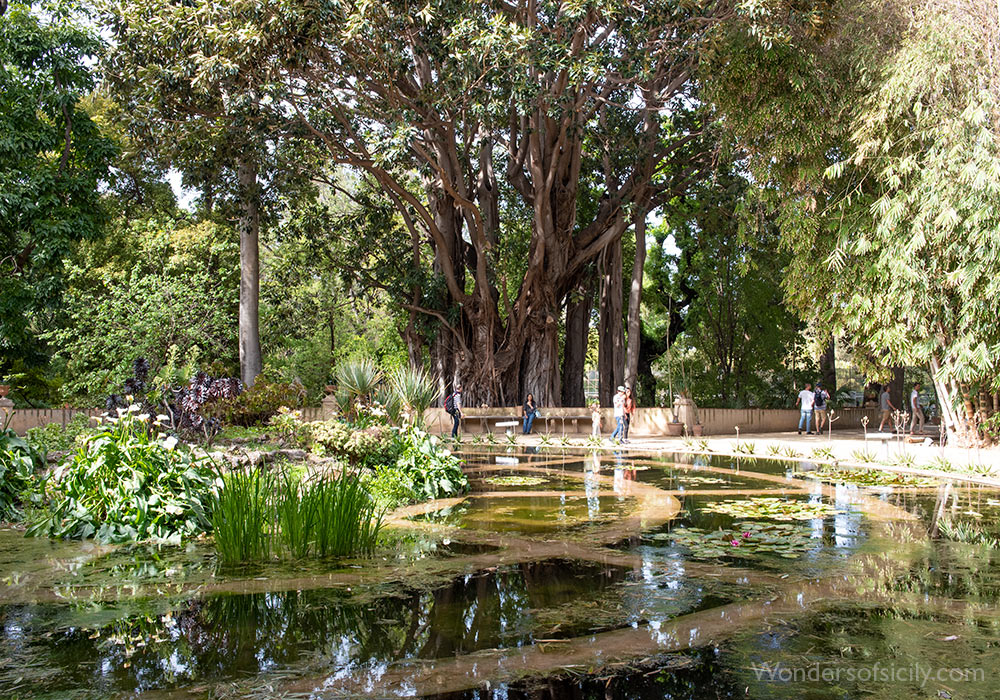
The beautiful pond at the center of the garden.
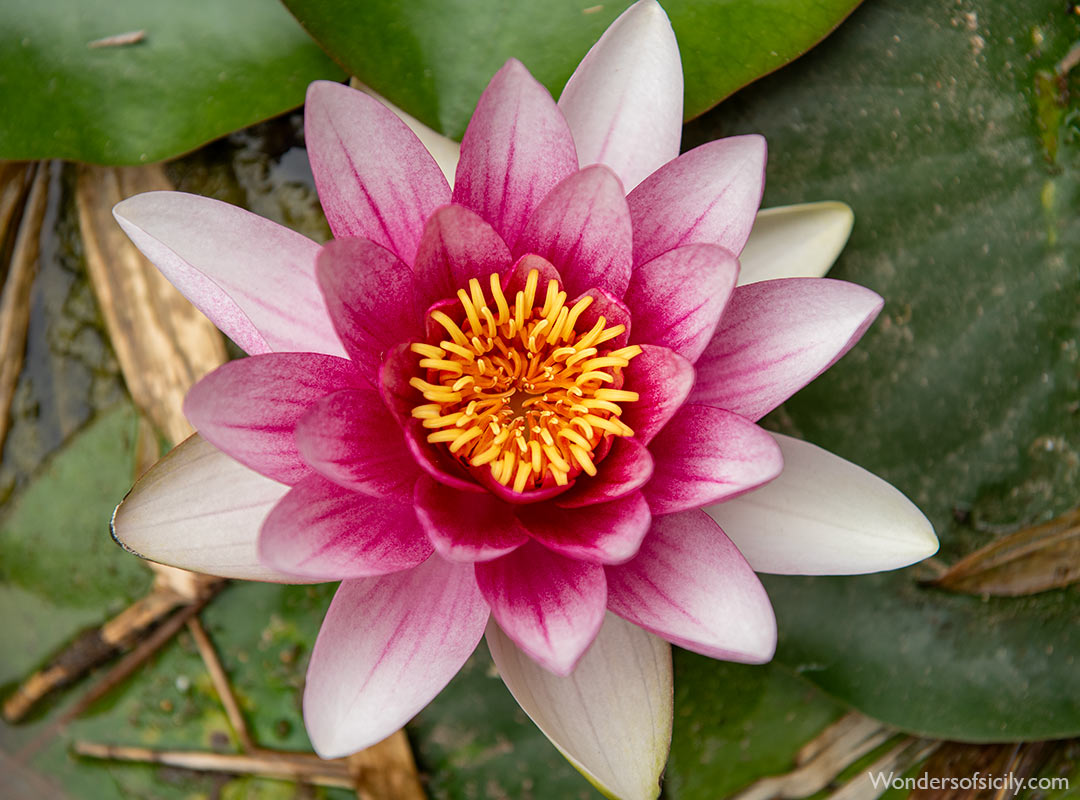
Water lily.
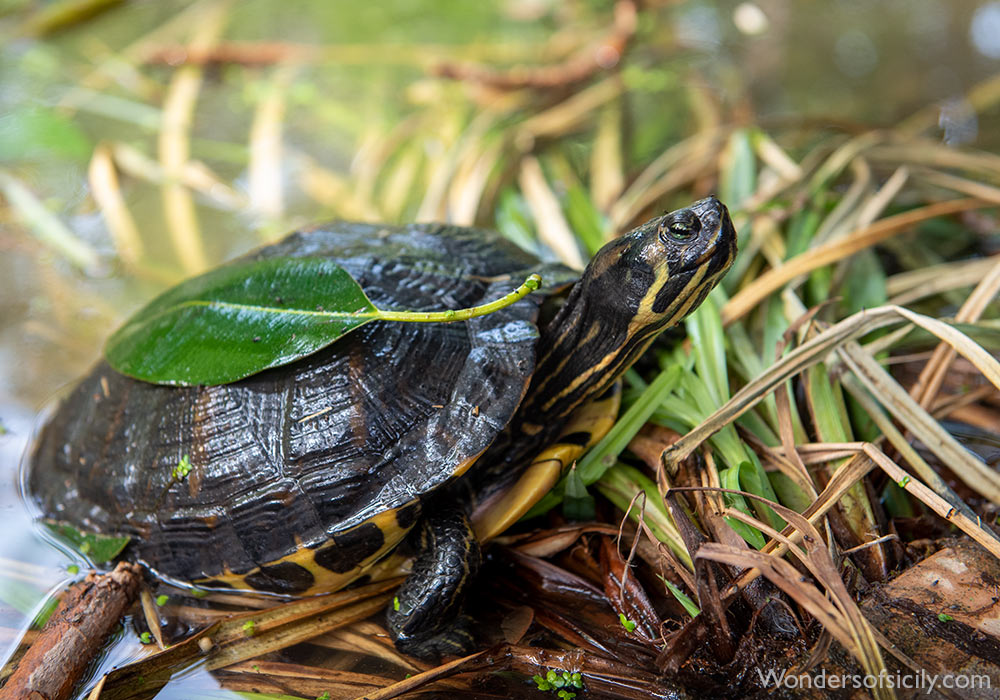
Many turtles live in the pond. This one we call Attilio.
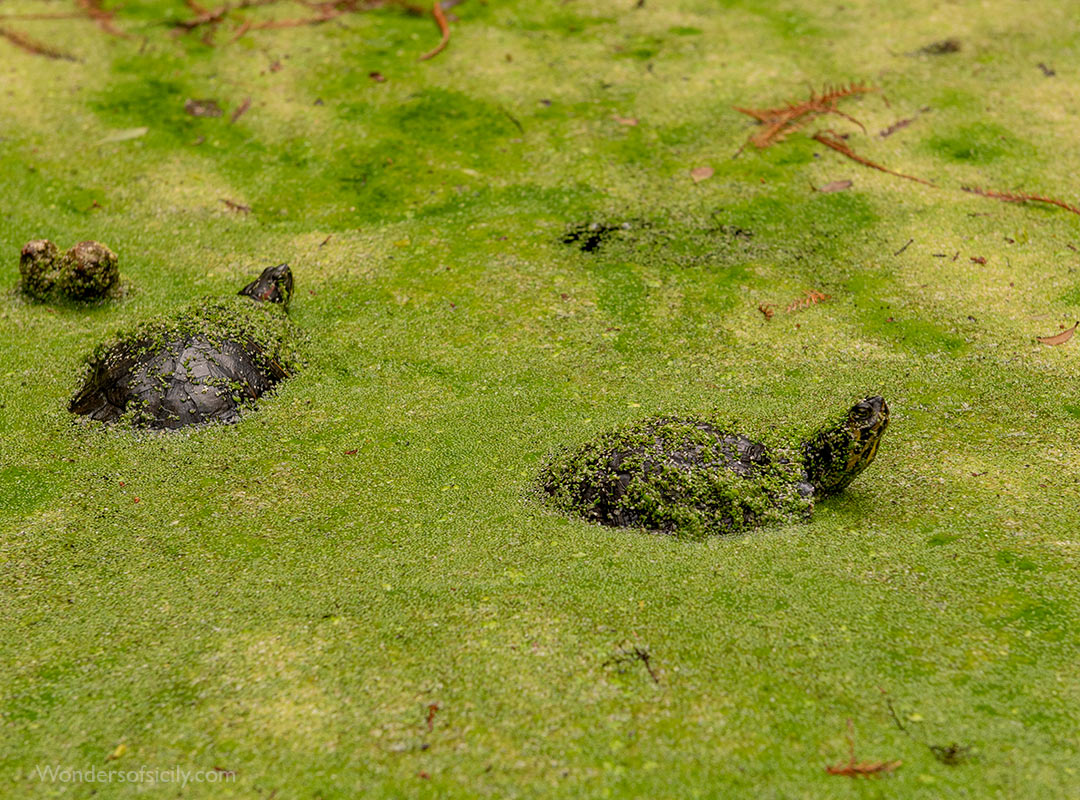
Turtles swimming around in the water.
Aloe plants
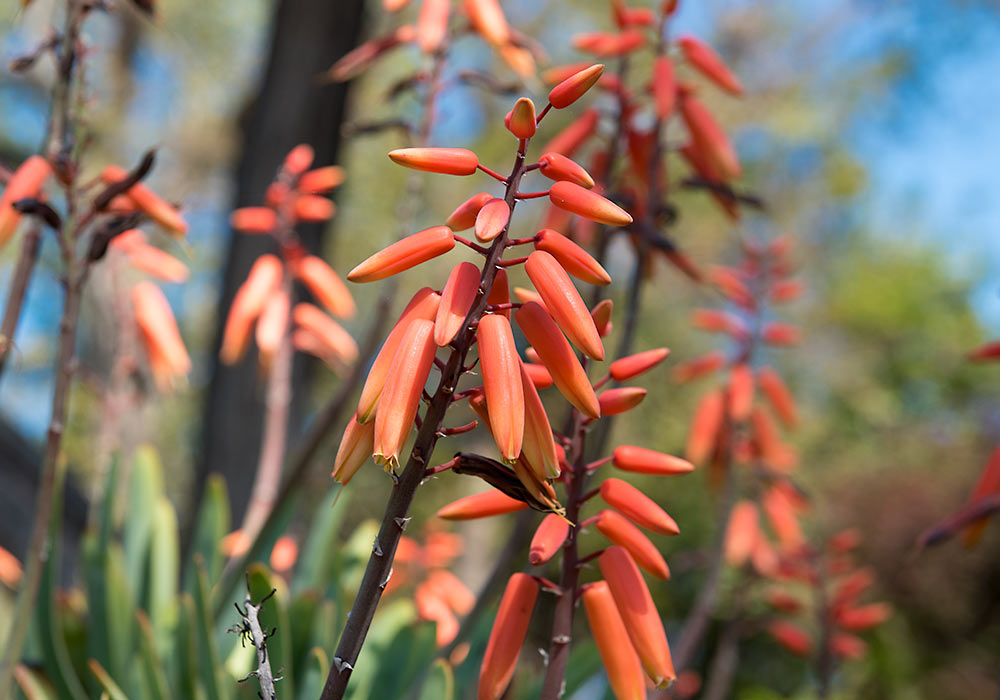
Aloe plicatilis in the Botanical Garden (Orto botanico) in Palermo, a nice place to relax between visiting churches and museums in Palermo. The garden opened to the public in 1795. It has a lot of plants and trees from all over the world. In the lovely lily pond, there are lots of cute turtles.
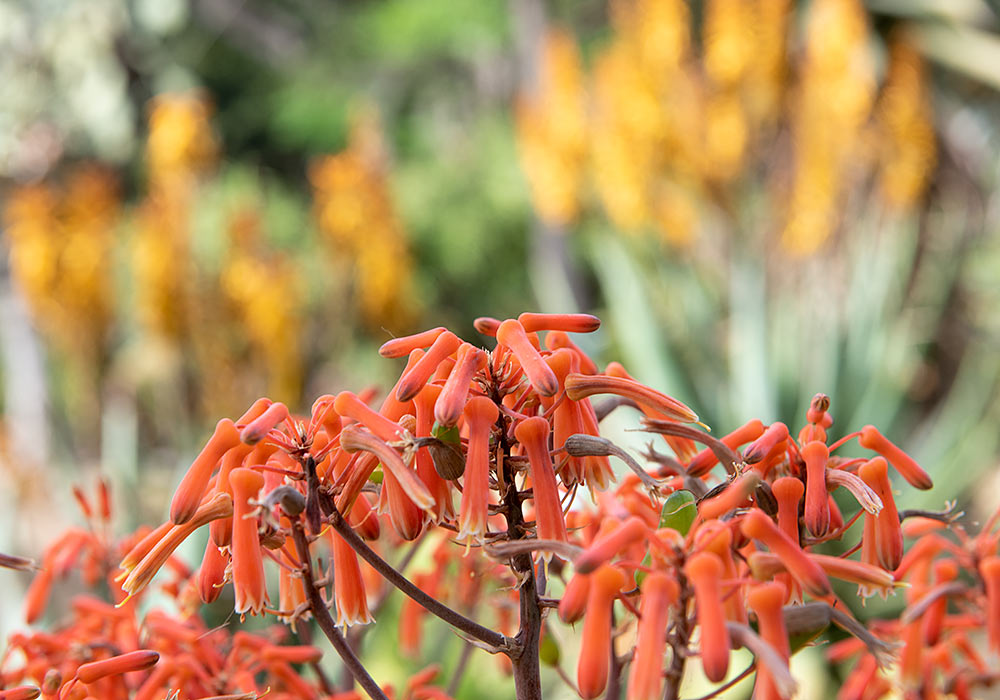
Aloe plant.
Cacti
Palermo’s Botanical Garden is home to a remarkable collection of cacti, showcasing the beauty and resilience of these extraordinary plants. Native to the Americas, cacti have adapted to some of the harshest environments on Earth, storing water in their thick stems and evolving spines to protect against herbivores. In Palermo’s mild Mediterranean climate, they thrive outdoors, creating a striking landscape of shapes, textures, and colors.
Visitors can admire towering saguaros, compact barrel cacti, and intricate prickly pears, each telling a story of survival and adaptation. The garden’s cactus section is not only a visual delight but also a reminder of nature’s ingenuity. As a photographer, I am drawn to the dramatic forms. Whether you are a plant enthusiast or a casual visitor, the cacti in Palermo offer a fascinating glimpse into a world where beauty and endurance go hand in hand.
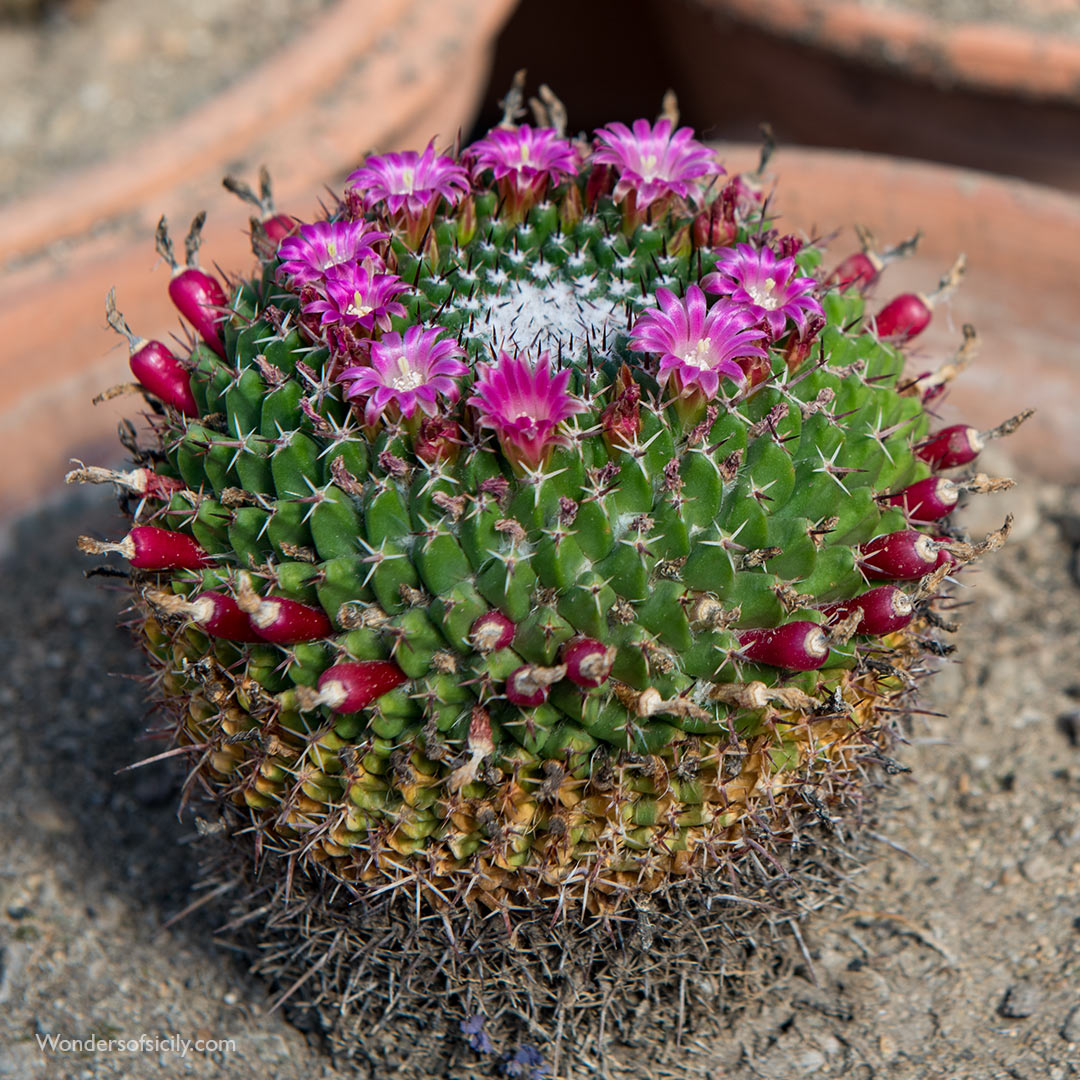
Mammillaria casoi.
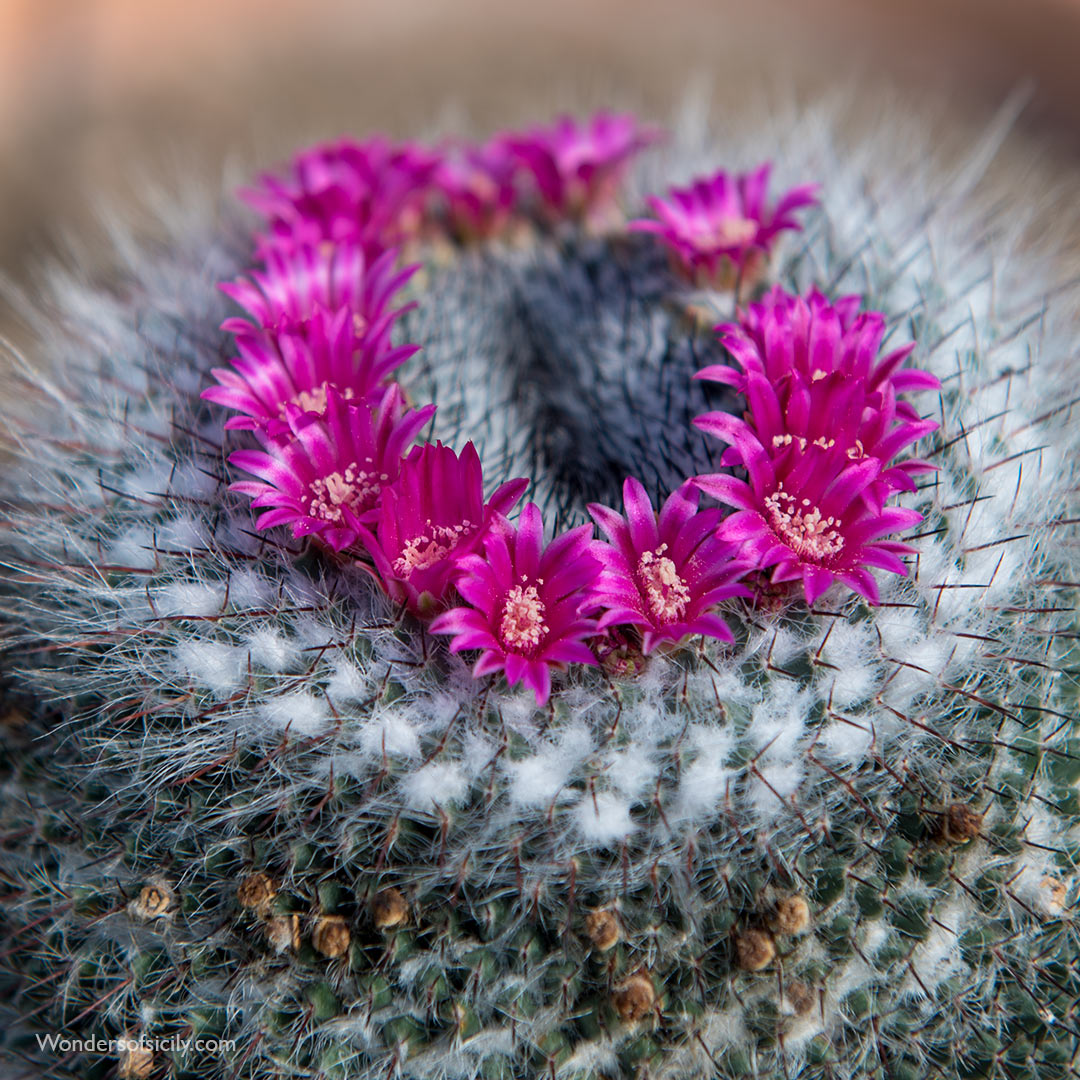
This beauty is called the old lady cactus (Mammillaria hahniana), a species of flowering plant in the family Cactaceae, native to central Mexico.
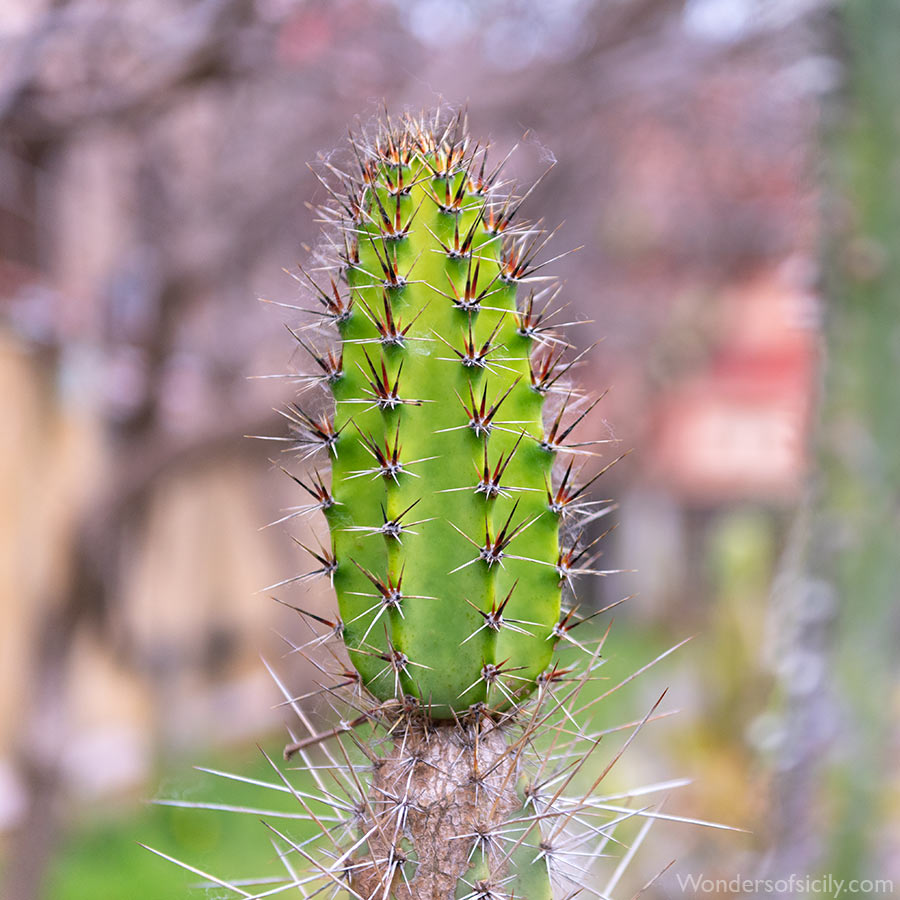
Cactus.
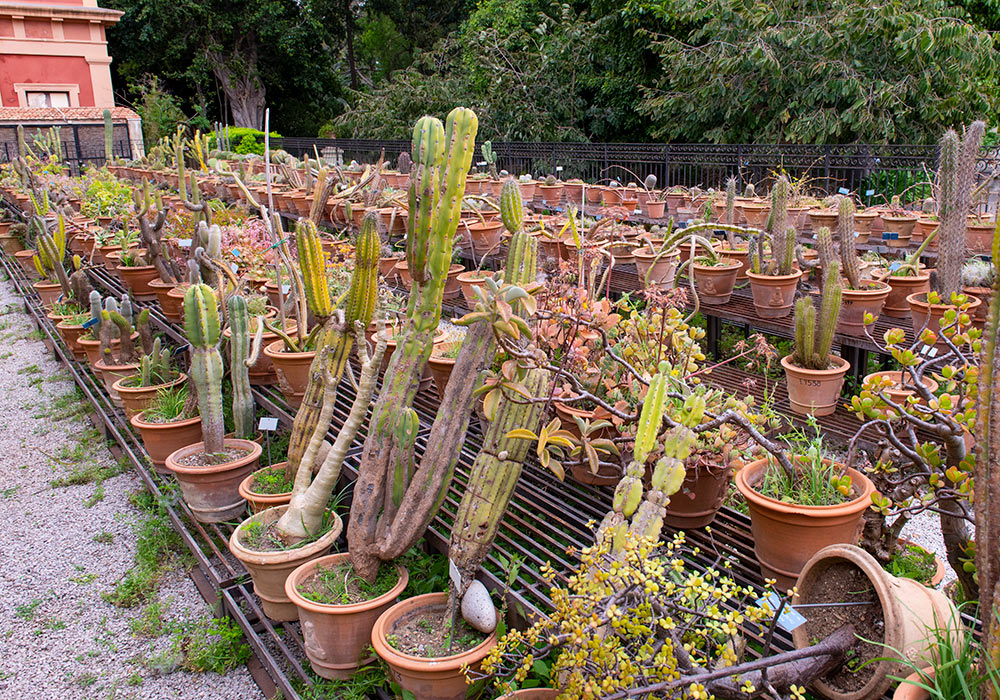
The Botanical Garden has a huge collection of cacti.
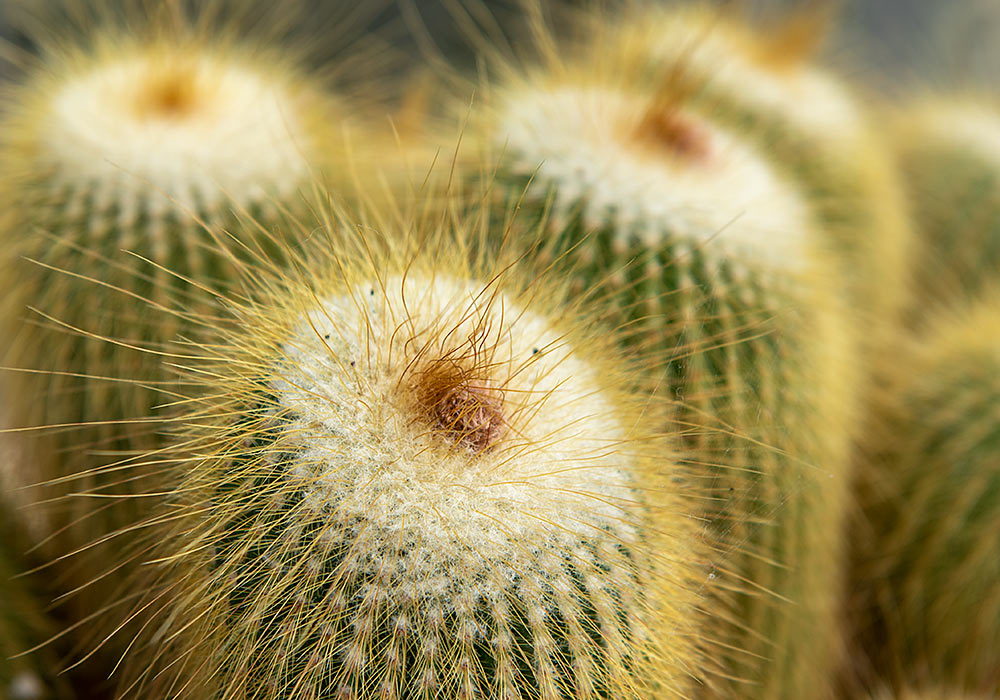
Cactus.
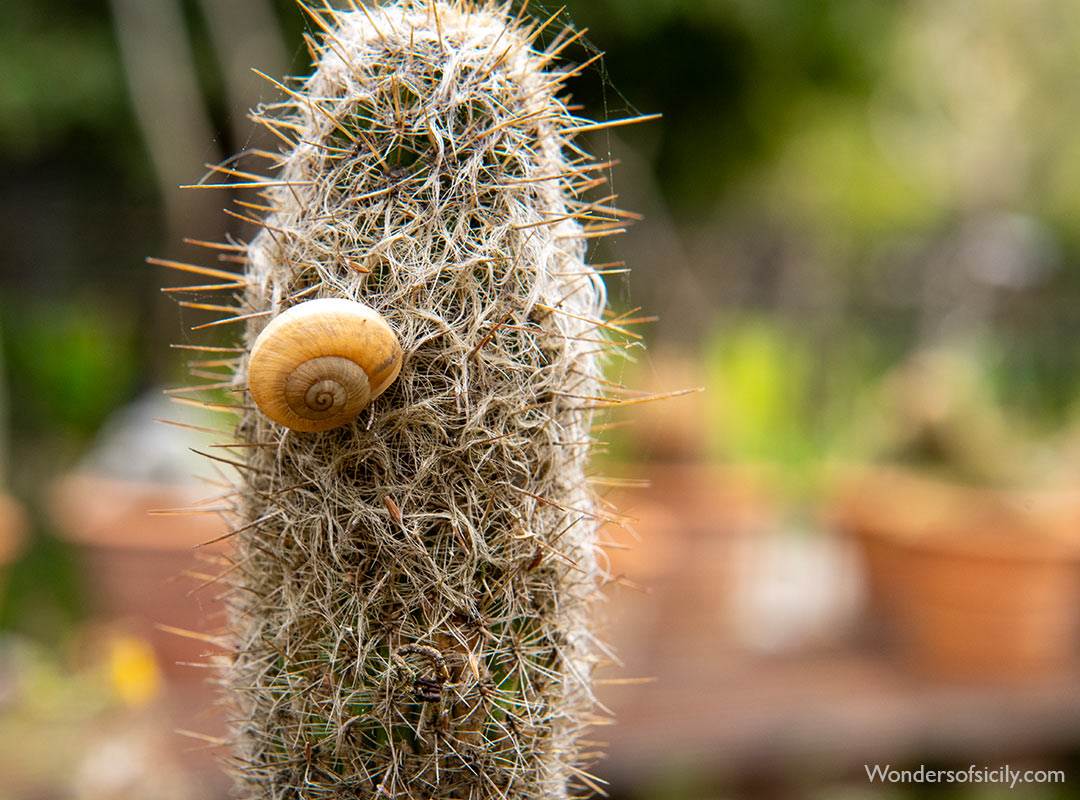
A snail living on a cactus in Palermo's botanical garden.
Snails are sometimes found living on cacti for several ecological reasons:
-
Moisture conservation: Cacti retain water, and snails — which are highly prone to desiccation — can find slightly more humid microenvironments on the cactus surface, particularly in shaded crevices or beneath spines.
-
Food source: Certain snails feed on parts of the cactus, especially softer tissues and flowers.
-
Shelter: The spines of the cactus provide a physical barrier against predators such as birds and small mammals, offering snails a relatively safe refuge.
-
Incidental dispersal: In rare cases, snails might incidentally use plants for passive dispersal, although this behavior is more commonly observed with seeds and small insects rather than gastropods.
Thus, cacti can function simultaneously as a habitat, food source, and protective structure for snails.
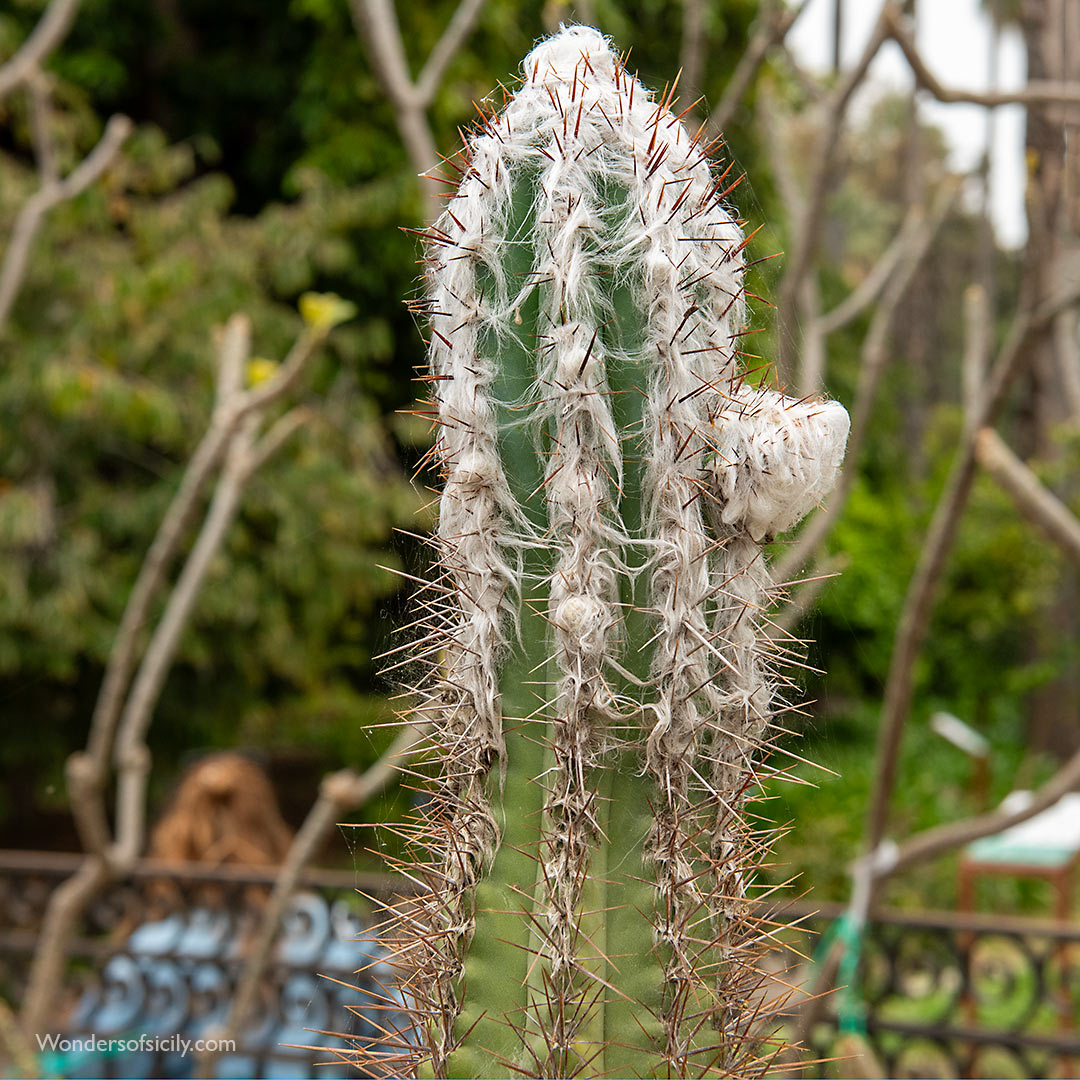
The whitish, wool-like hairs you see on this cactus are called trichomes. Trichomes are tiny hair-like structures that serve several purposes: protection, temperature control, defense. Some cacti are especially famous for trichomes, like the Cephalocereus senilis (commonly called the Old Man Cactus) which looks almost entirely covered in white "wool."
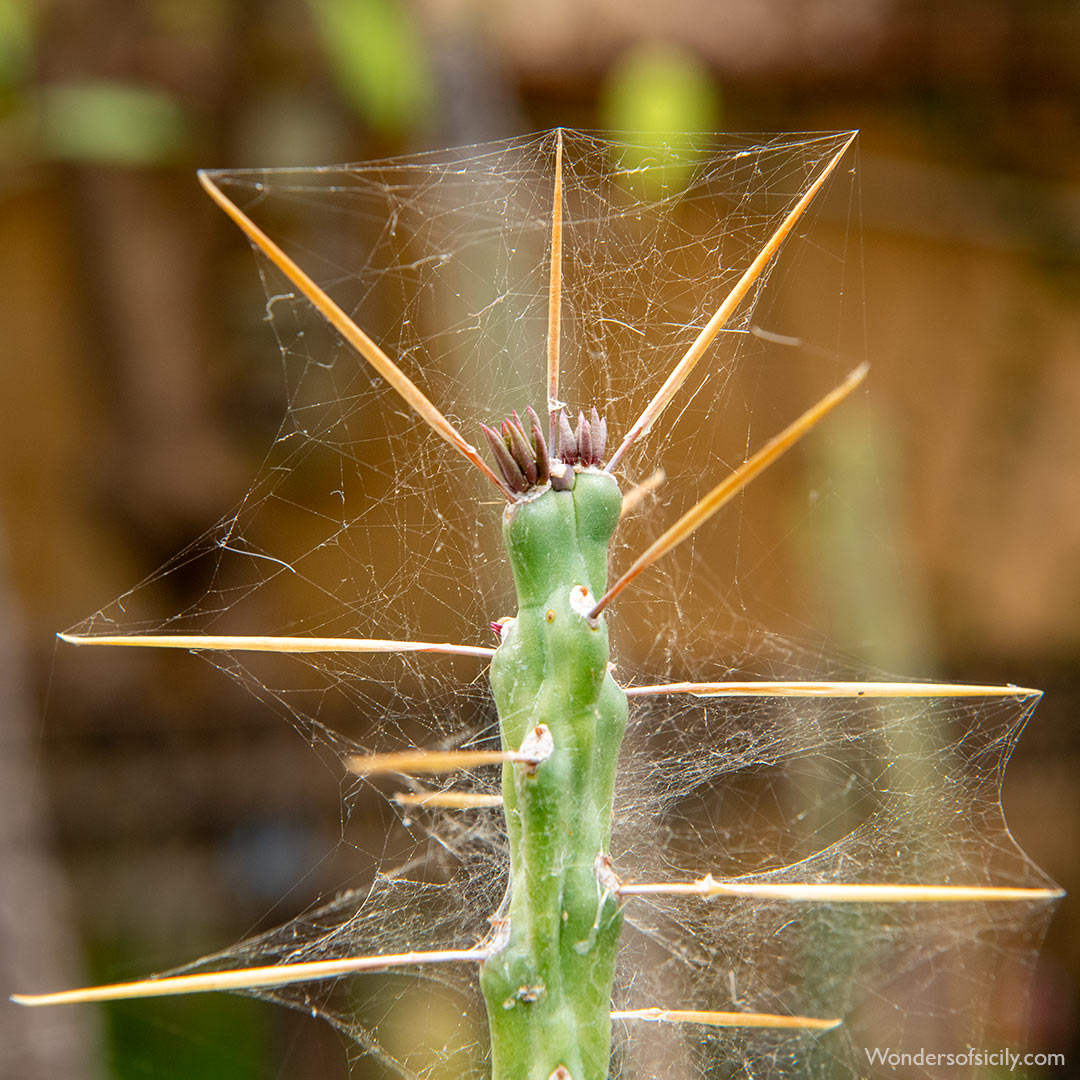
Citrus collection
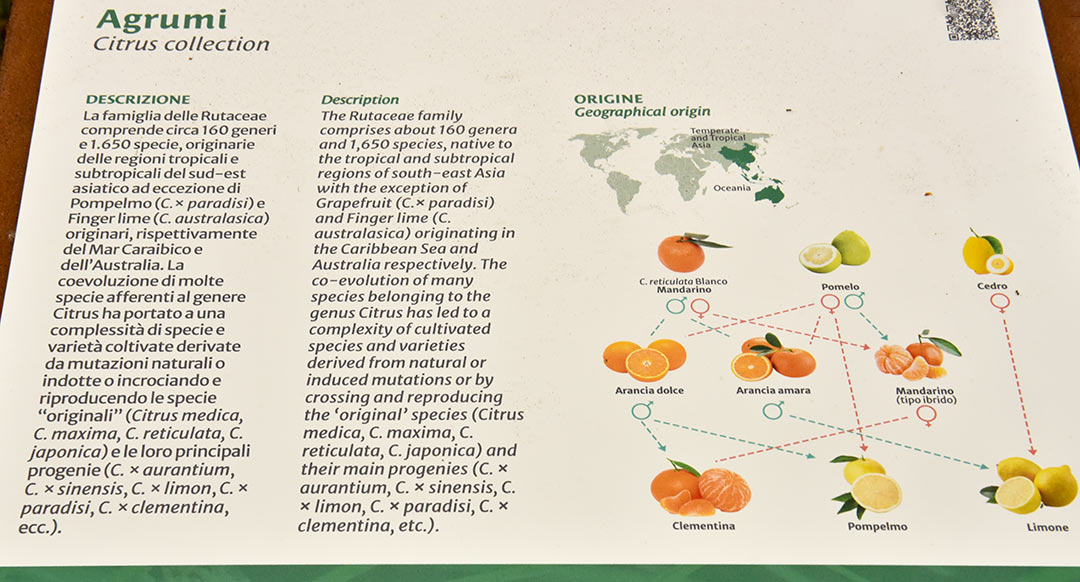
Information about the citrus collection in the botanical garden.
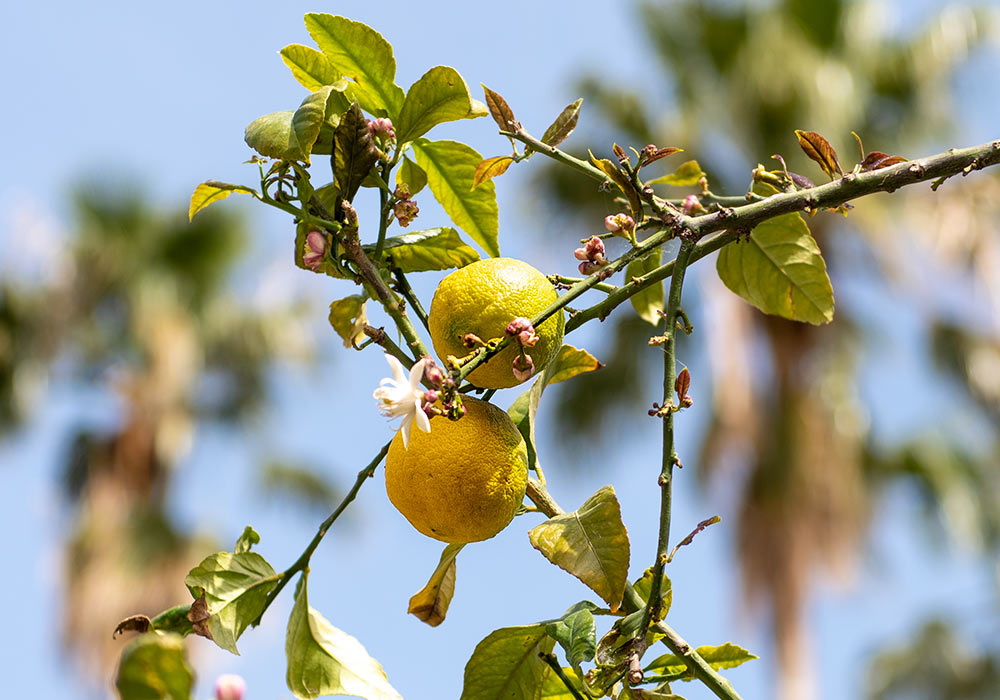
Lemons.
Lizards in Palermo's Botanical Garden
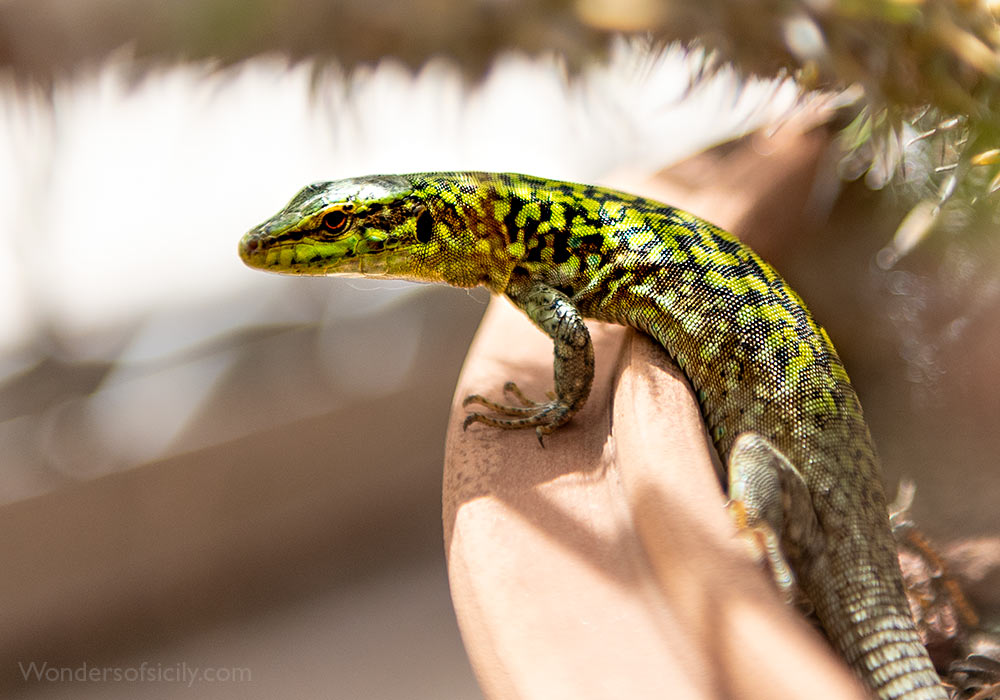
A lizard investigating the cactus section.
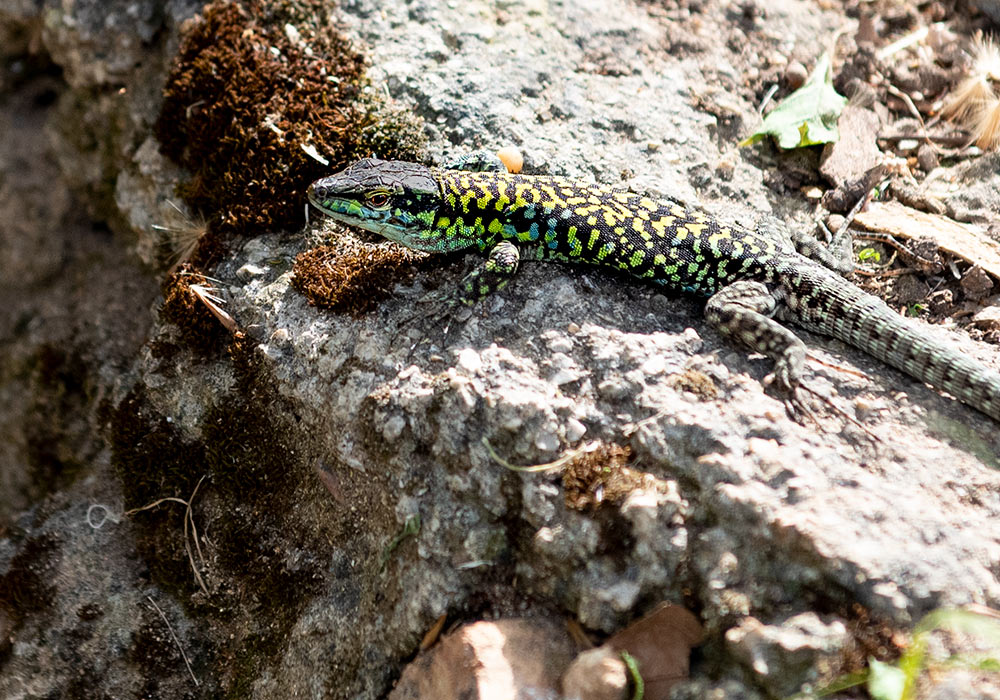
Lizard living in Orto botanico, Palermo.
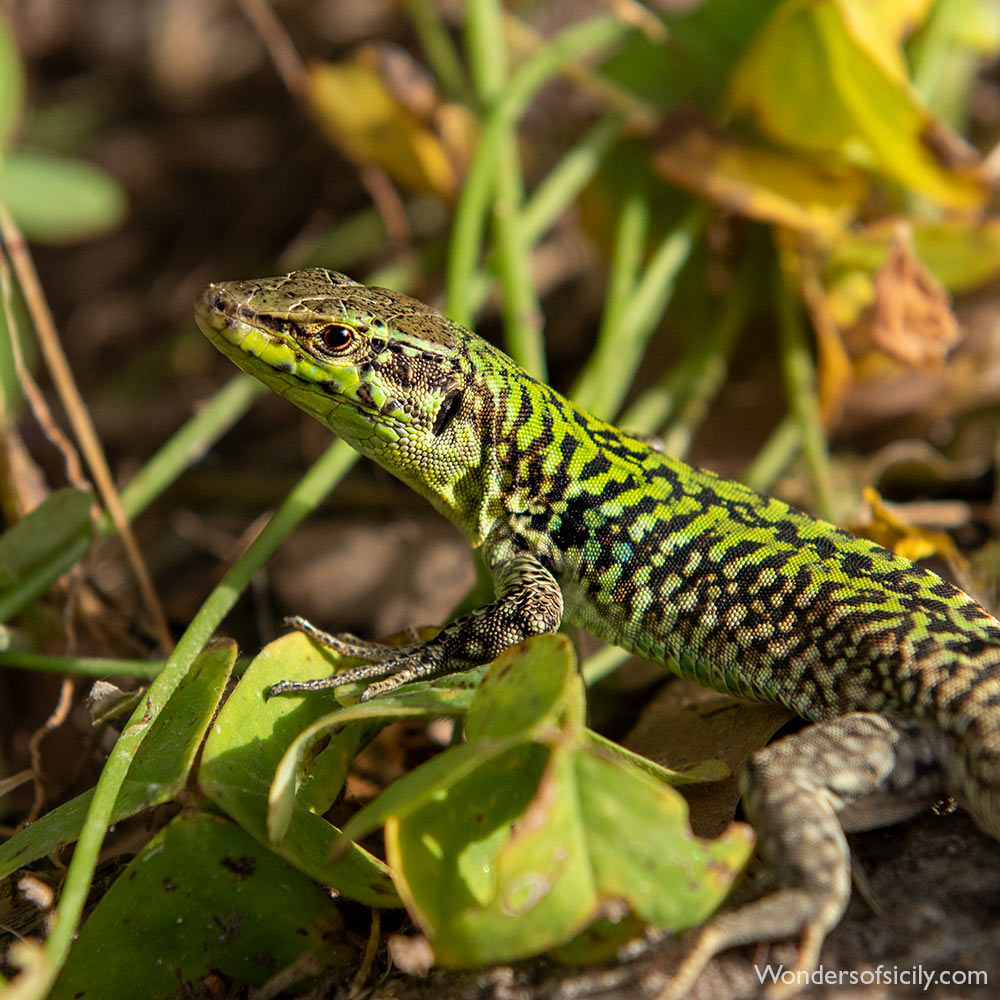
A lizard in Orto botanico, Palermo.
More plants and animals
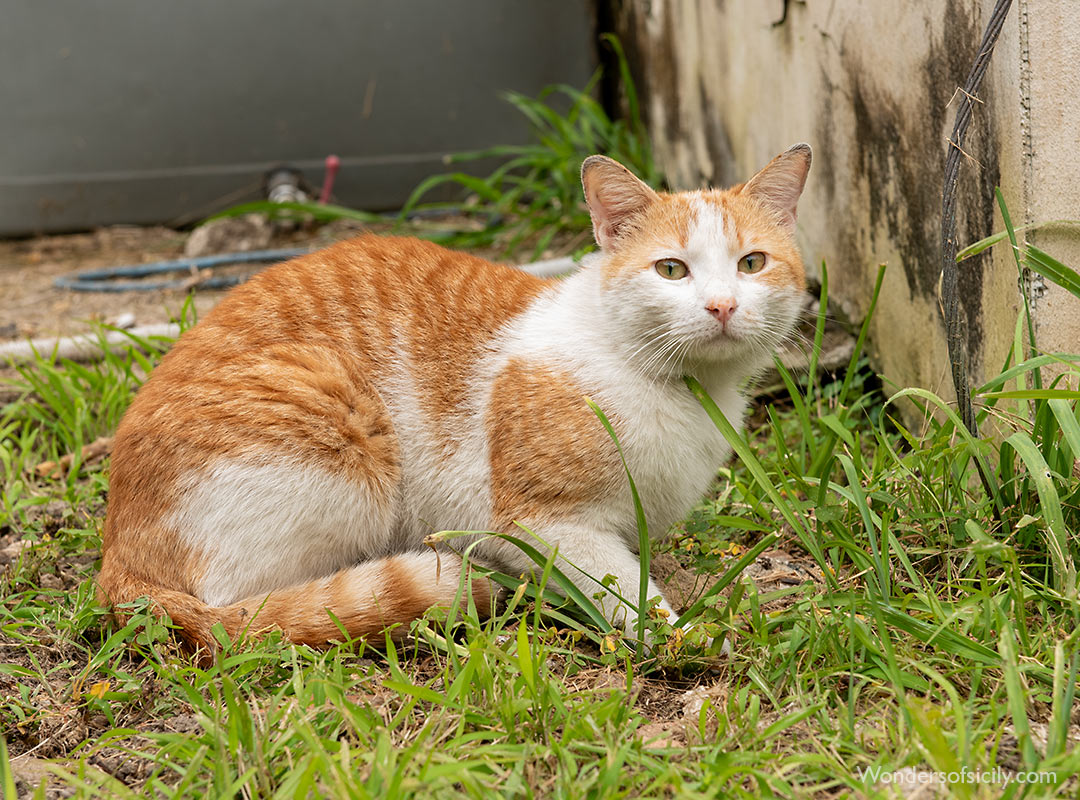
A beautiful cat living in Palermo’s botanical garden.
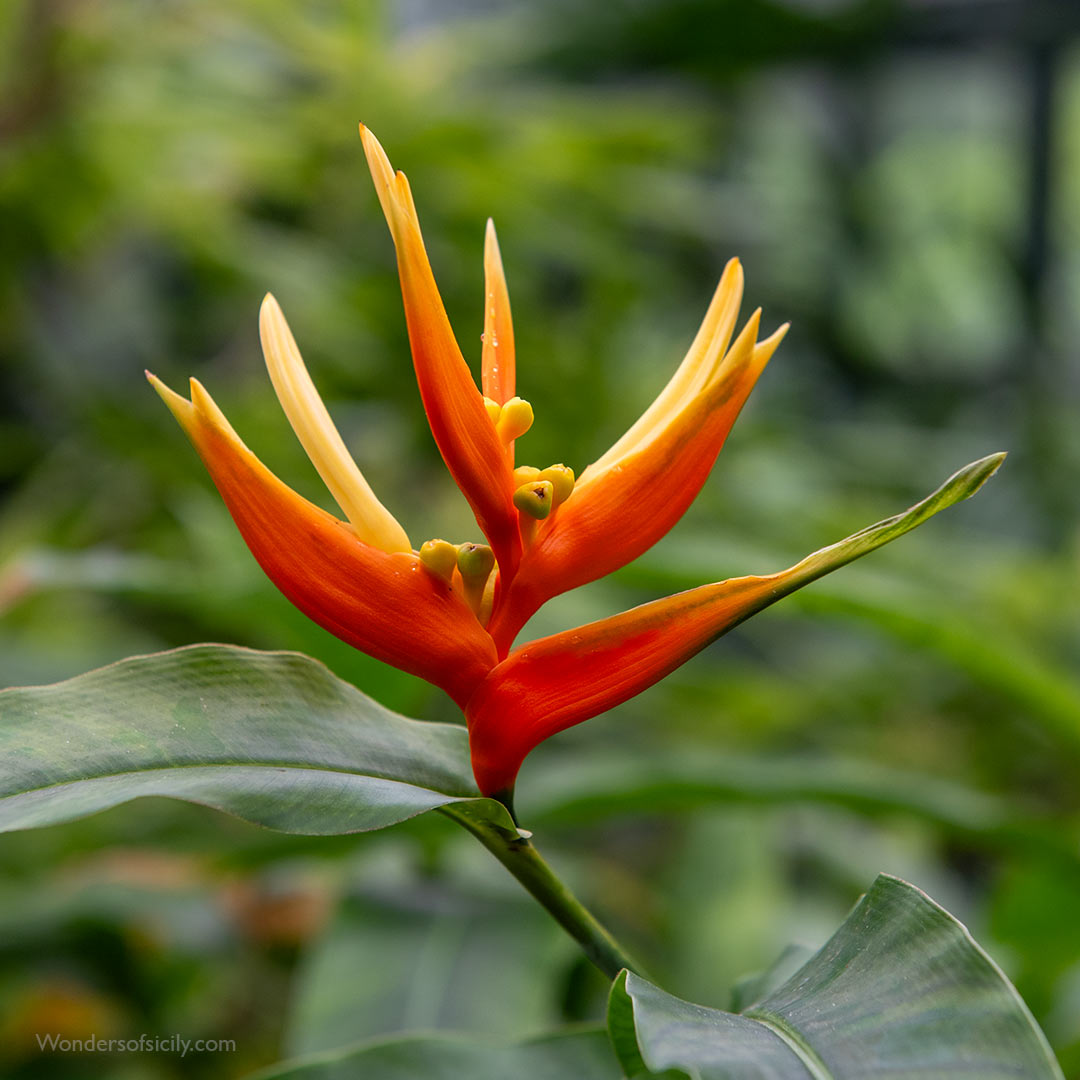
Could this beautiful ornamental flower perhaps belong to the same family as Strelitzia reginae?
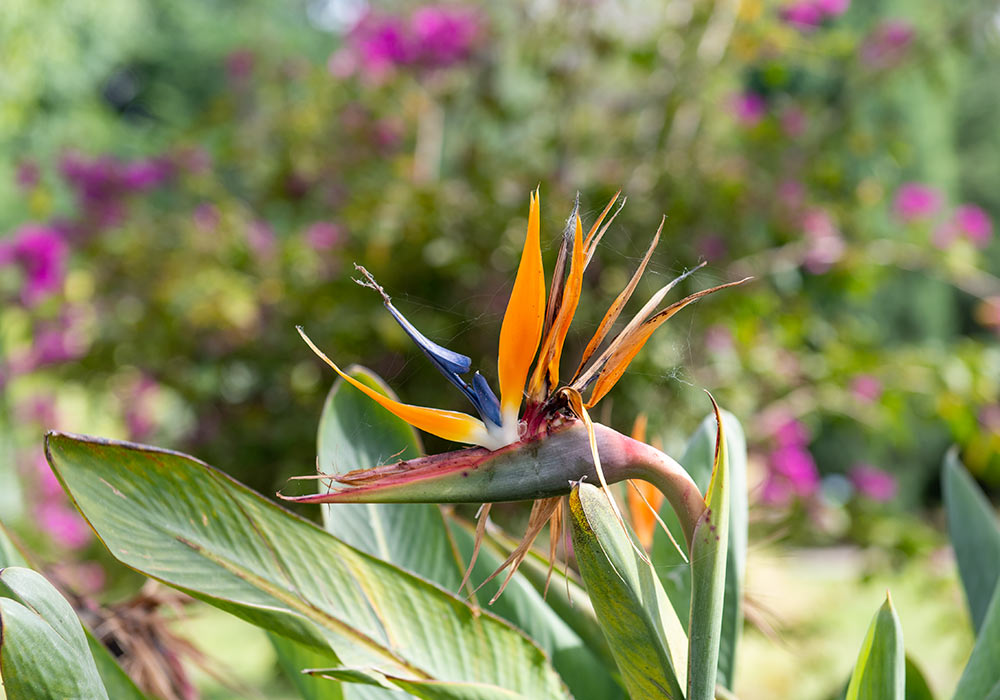
Bird of paradise, also called crane flower (Strelitzia reginae).
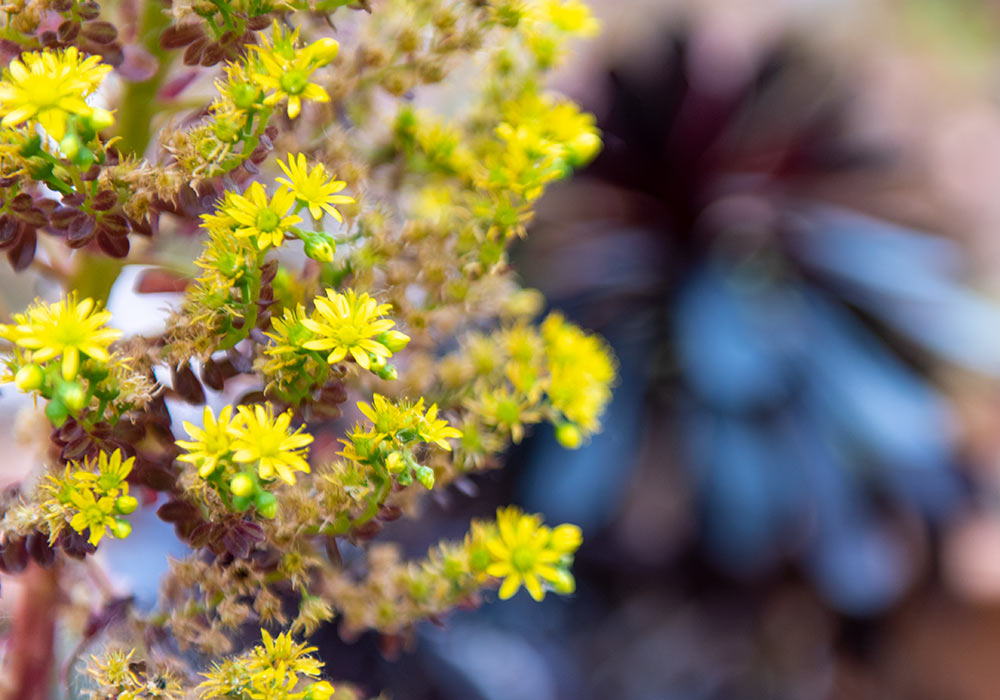
Orto botanico, Palermo
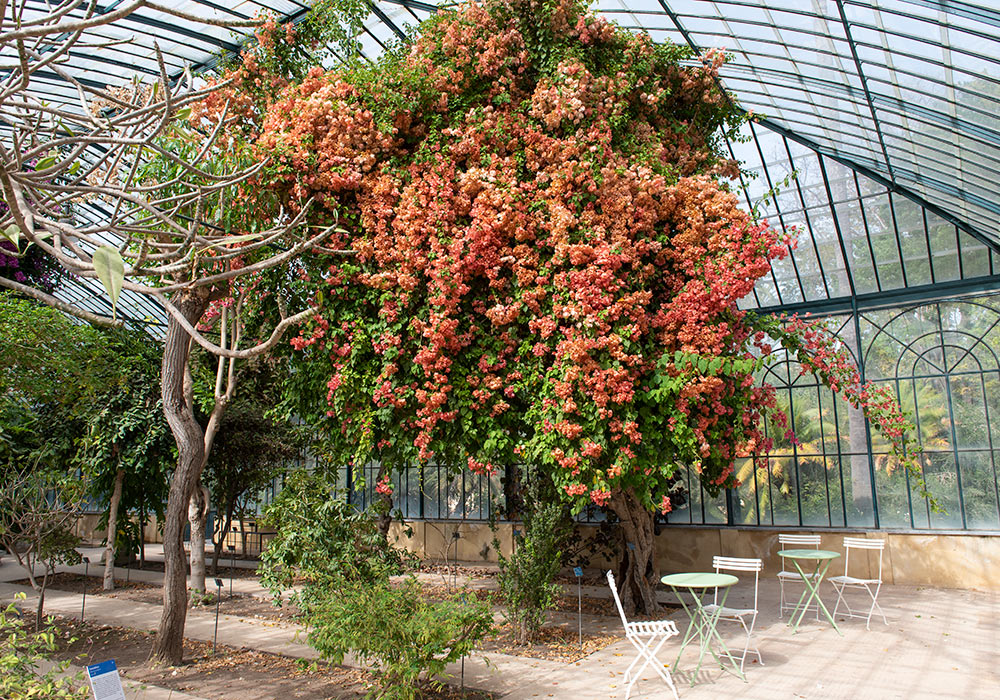
Greenhouse, Palermo Botanical Garden.
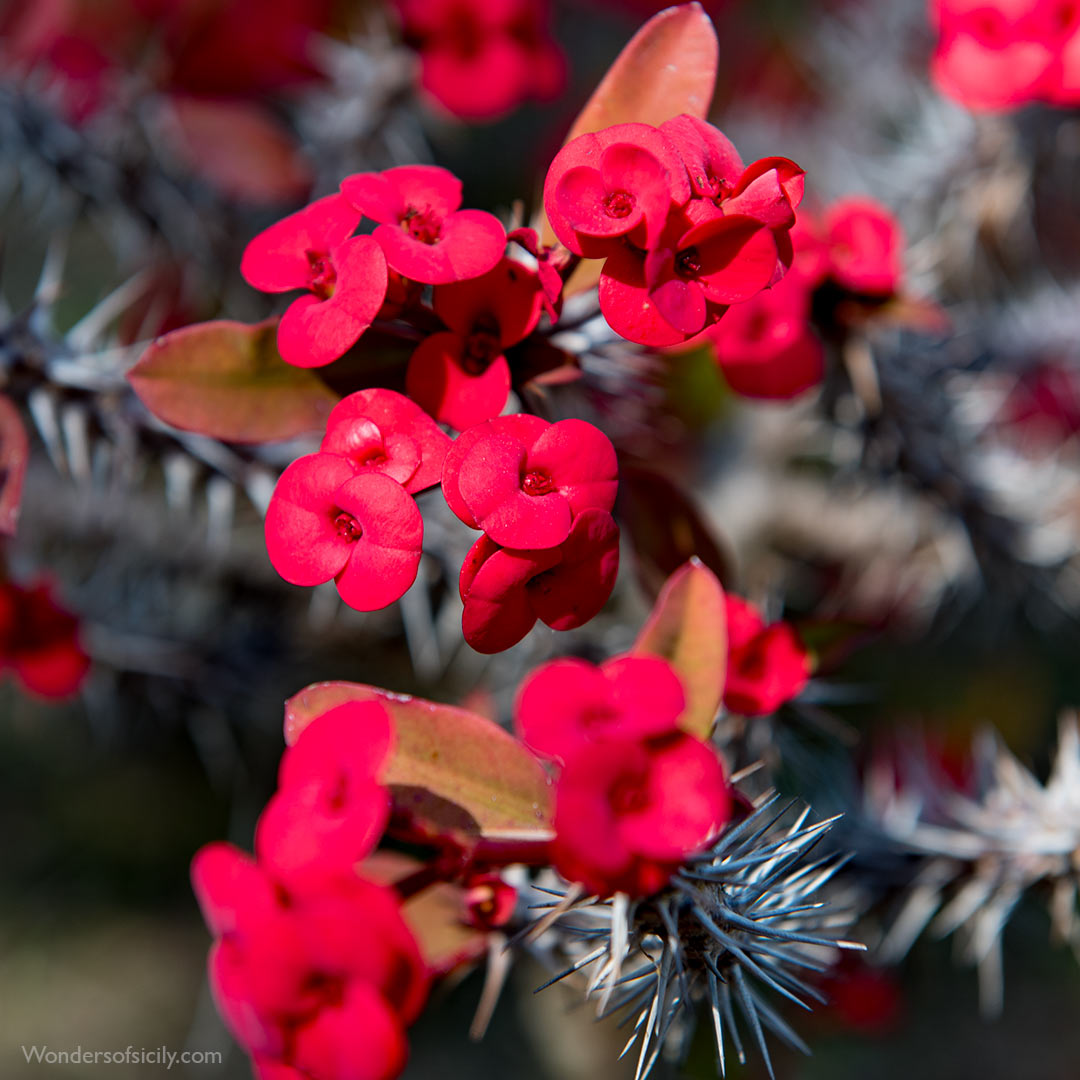
Euphorbia milii (also called the crown of thorns, Christ plant, or Christ's thorn) in the botanical garden. Euphorbia milii is a species of flowering plant in the spurge family Euphorbiaceae, native to Madagascar.
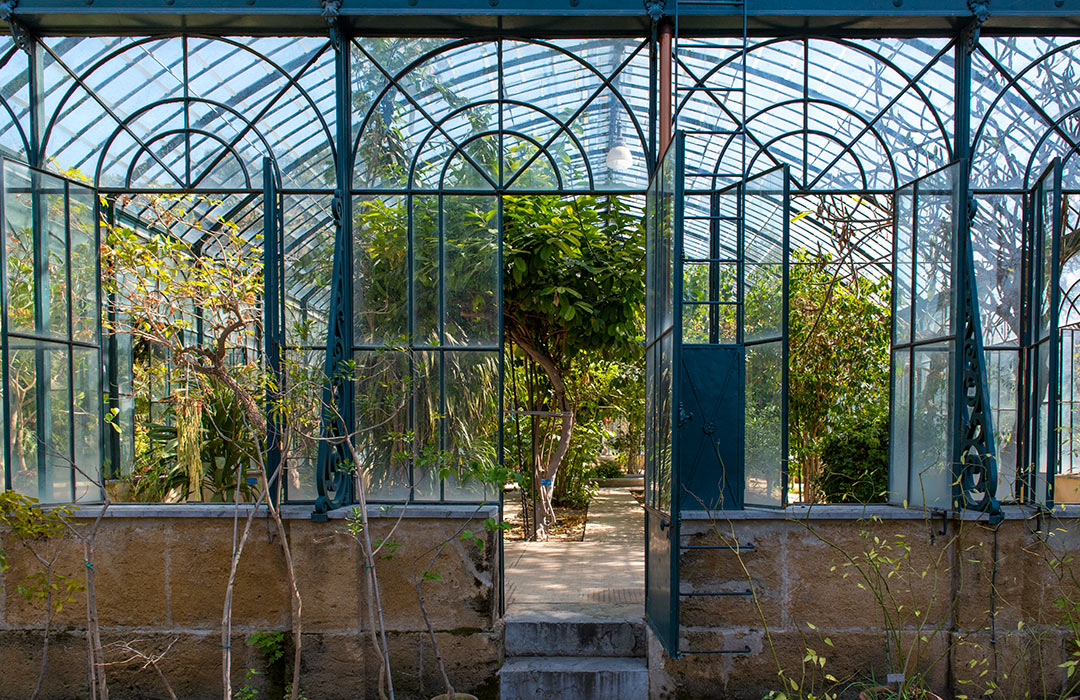
A greenhouse.
All photos © Per-Erik Skramstad. No photos may be reproduced in whole or in part in any manner without the permission of the copyright owner.

